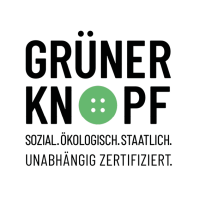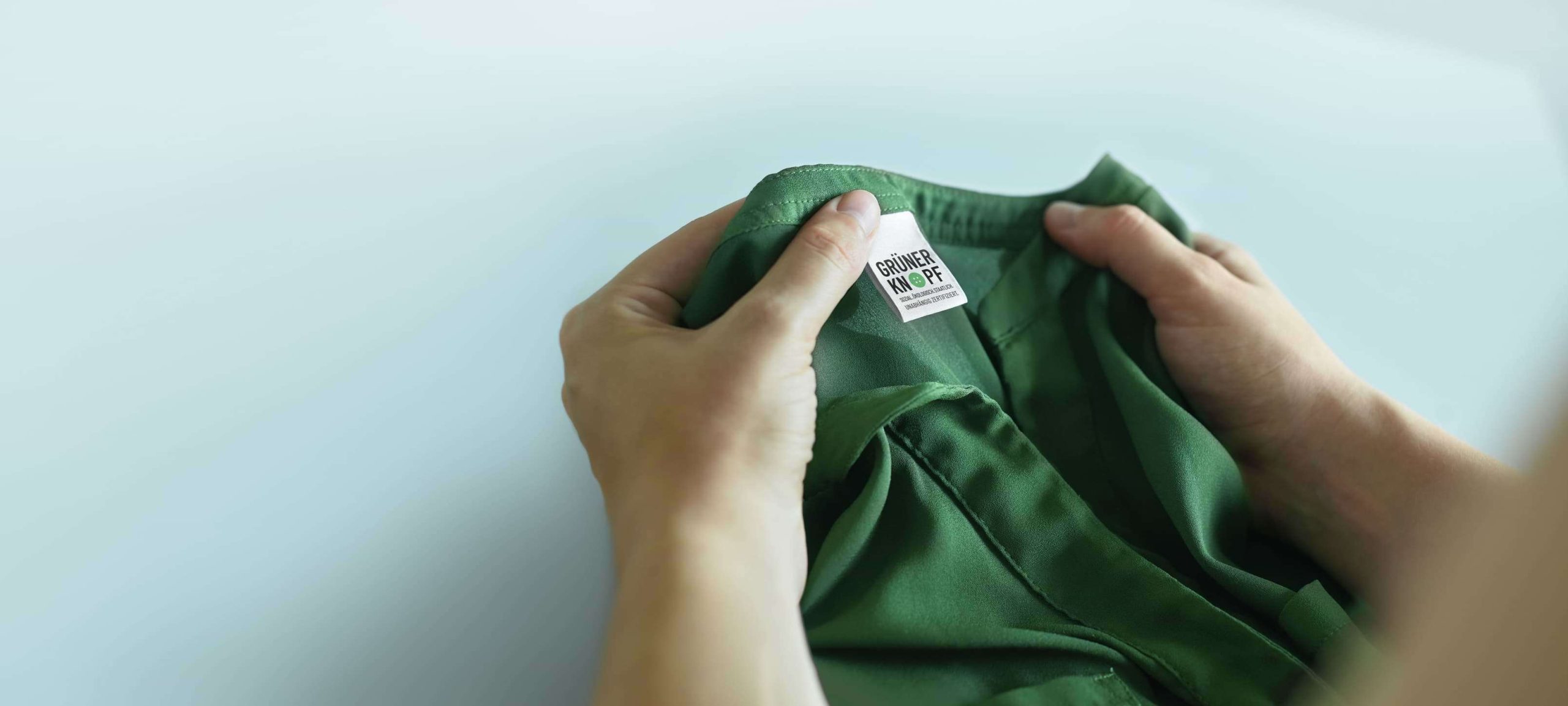
Grüner Knopf
The Grüner Knopf (Green Button) is a German textile quality seal that sets binding requirements for companies in textile supply chains in order to protect people and the environment. A total of 46 rigorous social and environmental standards must be met.

Key elements of Grüner Knopf
The Grüner Knopf audit is carried out both at company and product level. The company audit offers the real added value of the Grüner Knopf compared to other textile labels: the companies prove that they know the human rights risks in their supply chains, report on them – and correct them. An important step towards more transparency in a global supply chain.
Five main elements
There are five main elements in the corporate audit:
-
1. Orientation of the company policy (policy statement on how to deal with certain things and what the expectations of suppliers and partners are)
-
2. Preparation and evaluation of a risk analysis (for procurement or own business model)
-
3. The development and implementation of appropriate policies (at the own site and at the suppliers’ site)
-
4. Transparent external communication
-
5. And the establishment of complaint management (for the supply chain and at manufacturing plants) and redress in the event of negative impacts occuring within the supply chain
Recognized quality marks
The product verification is carried out on the basis of already existing labels. An overview of the currently recognized quality marks can be found here.
Overview of recognized quality marks
How you benefit
-
Transparent, public reporting on social and environmental issues
-
Working conditions in the production chain at least at Tier 1 level
-
Working conditions & environmental standards up to Tier 2 level for wet-processing
-
Identification and traceability of the organic material in the product through recognized certifications such as GOTS
-
Requirements for social responsibility in companies and their supply chains according to the criteria of, among others, the ILO, OECD and United Nations Guiding Principles (by means of the NAP)- i.e. exclusion of child labor, requirement for living wages and occupational health and safety
How can we help you?
